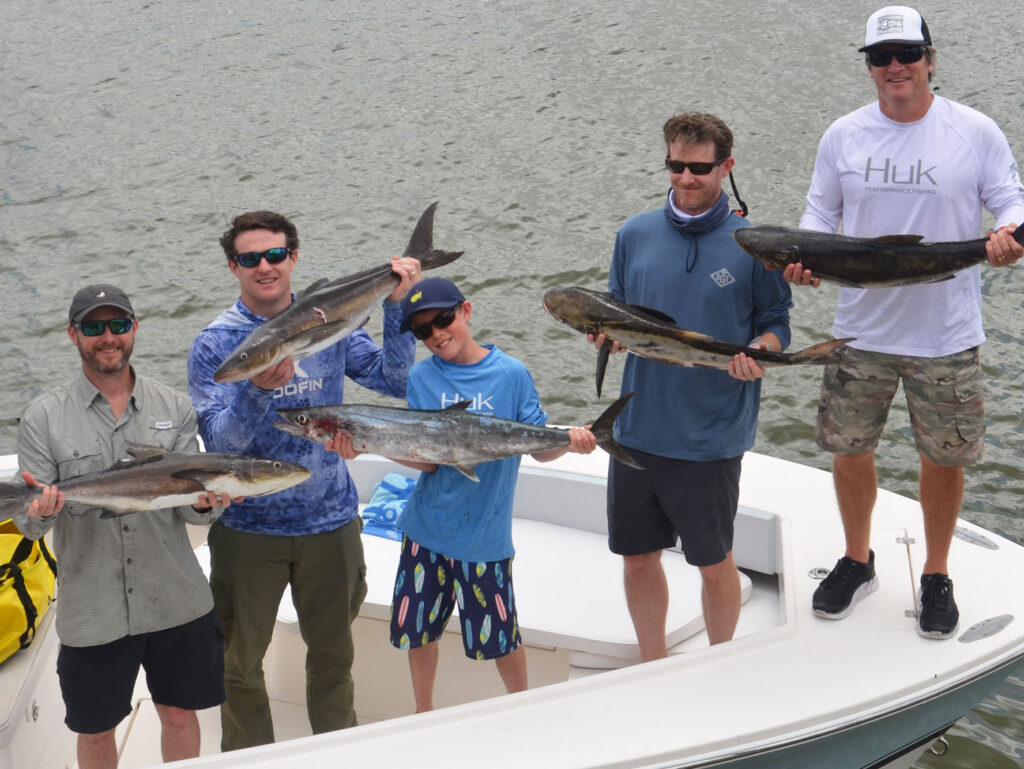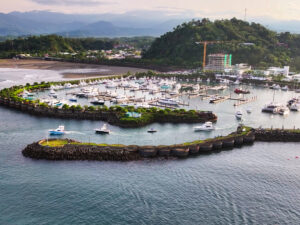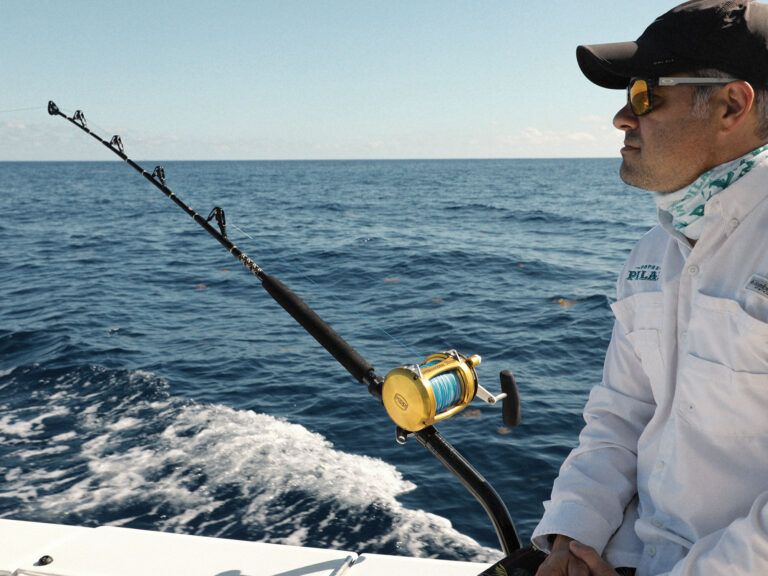
The Atlantic States Marine Fisheries Commission (ASMFC) approved major changes to management of Atlantic cobia during its summer meeting the first week of August. A shift from state-by-state to regional management along with an adjustment to recreational quota allocations could lead to more restrictive regulations for anglers from Virginia to Rhode Island.
Previously, catch targets were set on a state-by-state basis for Virginia, North Carolina, South Carolina and Georgia. The states north of Virginia were grouped together as “de minimis,” meaning cobia catches are infrequent enough to be considered inconsequential, less than 1 percent of the coastwide harvest. Cobia on the east coast of Florida are managed separately as part of the Gulf of Mexico stock by the Gulf of Mexico Fishery Management Council.
Going forward, states from Virginia through Rhode Island are grouped into a northern region for purposes of cobia management. The new southern region is North Carolina through Georgia. This reorganization and some other procedural changes are intended to address increasing cobia harvest in the Mid-Atlantic as well as high levels of uncertainty with harvest estimates produced by NOAA’s Marine Recreational Information Program (MRIP).
Cobia Allocations Shift North
New catch allocations for the new regions were also voted on at the meeting, with the six de minimis states voting as a block with Virginia. The northern region was granted 68.69 percent of the total coastwide recreational quota of 76,908 fish, leaving the southern zone with 31.31 percent. This is a dramatic shift from previous management, which allocated 59.6 percent of the catch to the southern zone states and 40.4 percent of the catch from Virginia north.
“In essence, what happened is Georgia, South Carolina and North Carolina will have a smaller catch target on an annual basis than they had before,” says Spud Woodward, Georgia’s appointed commissioner and chair of the ASMFC’s Pelagic Management Board, which manages cobia. “In fact, in numbers of fish, we went from those three states—with their individual allocations being 45,837 fish— now down to basically 24,080 fish.”
Paradoxically, this reallocation will result in stricter regulations for the northern zone, while southern zone regulations will remain the same, at least in the short term, says Woodward. This is due to Virginia’s booming cobia fishery in lower Chesapeake Bay.
Virginia’s Booming Cobia Fishery
As a group, the southern region normally catches less than its annual allotment, Woodward explains, while Virginia alone regularly overruns the catch target for all the northern states. This is why northern region states have been pushing for a larger share of the catch, to more fully utilize the total allowance as the cobia range expands northward with warming ocean temperatures.
From 2018 to 2023, “The Virginia state allocation was 30,302 fish. They exceeded that in all six years, and in two of those years, Virginia’s catch actually exceeded the entire coastwide catch, which is 76,908 fish,” says Woodward.
In 2018, Virginia’s estimated catch was 80,679 fish. In 2023, it was 81,824. “So, Virginia is going to have to make some changes to their harvest regulations to get back in line,” Woodward says. “Even though they’re getting a bigger share of the coastwide allowable catch, they’re still so far over, even with the new allocation, that they’re going to have to do something.”
Stricter Regulations Coming Soon
Woodward says it is his understanding that Virginia will need to make changes effective early in 2025 or before so that they are in effect for the 2025 fishing year, but he’s not yet sure what that will look like. Virginia already has the most restrictive cobia regulations on the Atlantic Coast, with a June 15 to Sept. 15 open season, a minimum size limit of 40 inches, an allowance for just one fish over 50 inches, and a one per person, two per vessel bag limit.
The other states north of Virginia will also have to abide by new northern region regulations, Woodward says.
“For the southern region, from a fisherman’s standpoint, you’re not going to see anything change in terms of regulations in those three states until we get a new assessment. Which probably means we won’t even consider changes, if necessary, until ’26 and maybe as late as ’27.” A new Atlantic cobia stock assessment is expected to be completed next year or early in 2026.









